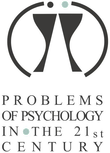THE CRACK USER AND THE CARE NETWORK: INTERVENTIONS AT THE UNIFIED HEALTH SYSTEM IN SOUTHERN BRAZIL
| Title | THE CRACK USER AND THE CARE NETWORK: INTERVENTIONS AT THE UNIFIED HEALTH SYSTEM IN SOUTHERN BRAZIL |
| Publication Type | Journal Article |
| Year of Publication | 2013 |
| Authors | Schein, S, Prati, LE |
| Journal | Problems of Psychology in the 21st Century |
| Volume | 6 |
| Start Page | 55-70 |
| Date Published | July/2013 |
| Type of Article | Original article |
| ISSN | 2029-8587 |
| Other Numbers | ICID: 1059498 |
| Keywords | crack cocaine, health care, public policy |
| Abstract | Crack consumption is being a problem that challenges health systems all over the world. In Brazil, changes in public policies were trying to organize the net of services that deal with this public. This paper presents how the public health system is organized and what are the interventions adopted in the different services that attend crack users. Using Ecological Insertion, researchers followed the everyday interventions at different services during three months (in each place). All the observations were registered in field diaries that were qualitatively analyzed. The data collection happened in three hospitals, six psychosocial attention centers, and five basic health unities in Paranhana Valley, southern Brazil. These services are distributed in different levels of attention in the health system. Results show that treating crack users still is a challenge for the system. The services must work integrated and adequate to the user demands. The multidisciplinary work is fundamental (involving psychiatry, psychology, social work and physical education). Different treatment approaches are needed, keeping the crack dependents and their family attended. The general hospital is the preferential therapeutic strategy. The basic health unities do not recognize their responsibility with this public and the psychosocial centers has the feeling that what are offered doesn’t attend the dependent demand. Despite the efforts to provide quality service, professional specialization and commitment with the patients are aspects that must be improved. |
| URL | https://oaji.net/articles/2014/444-1400266813.pdf |
| DOI | 10.33225/ppc/13.06.55 |
| Refereed Designation | Refereed |
| Full Text |
